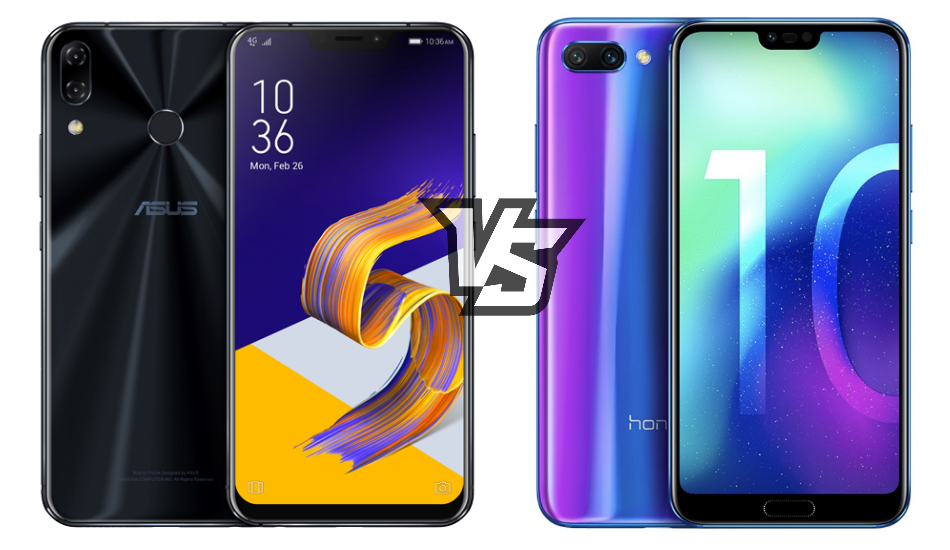LG today announced the LG G7+ ThinQ in India, a device which was unveiled in New York earlier this year with flagship specifications, a customisable notch and a dedicated Google Assistant key. The G7+ ThinQ goes on sale in India as a Flipkart exclusive for an asking price of Rs 39,990 from August 10.
The LG flagship thus comes under the same price bracket as the OnePlus 6 and Asus’ Zenfone 5Z, both of which were released in India recently with similar specifications at a half a flagship’s price. With top-end chipsets, large screen with the dreaded notches and a glass sandwich design present in every one of them lets look at how the latest device from LG racks up against the OnePlus 6 and newcomer Zenfone 5Z.
Design & Build:
Following on the heels of the V30S ThinQ, the LG G7+ ThinQ looks a lot like any other glass sandwich phone which is shaped to look basic and stylish at the same time. The Gorilla Glass 5 keeps the screen as well as the back safe from scratches and drops with both panels adhered to an aluminium frame. The G7+ comes with stunning paint jobs – Platinum Gray and Aurora Black but that’s not just it. In addition to its attractive design, the G7 is MIL-STD compliant for shock resistance and IP68-rated for water and dust resistance, thus making it the most durable of the lot.
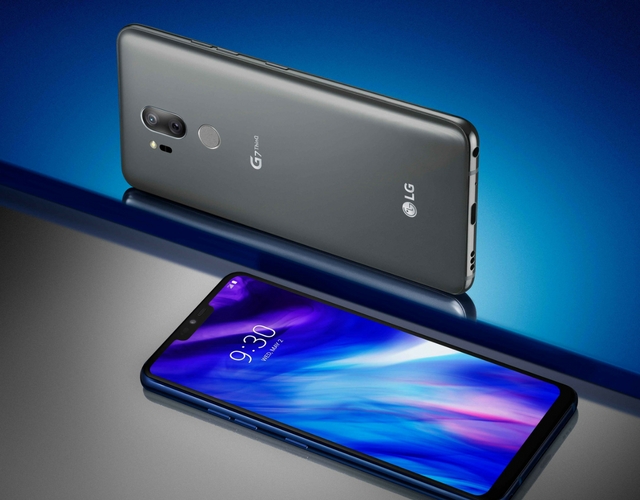
The all-glass design made of Gorilla Glass 5 is something that differentiates the OnePlus 6 from its predecessors. Its form factor matches the one on the OnePlus 5T, but the display now has a bezel-less front which when switched off is entirely black without giving a hint of the presence of the notch at the top. The device is available in a glossy ‘Mirror Black’, Red and ‘Silk White’ colours as well as the ‘Midnight Black’ variant for a classic matte finish, all of which will be inscribed with “Designed by OnePlus” at the back.
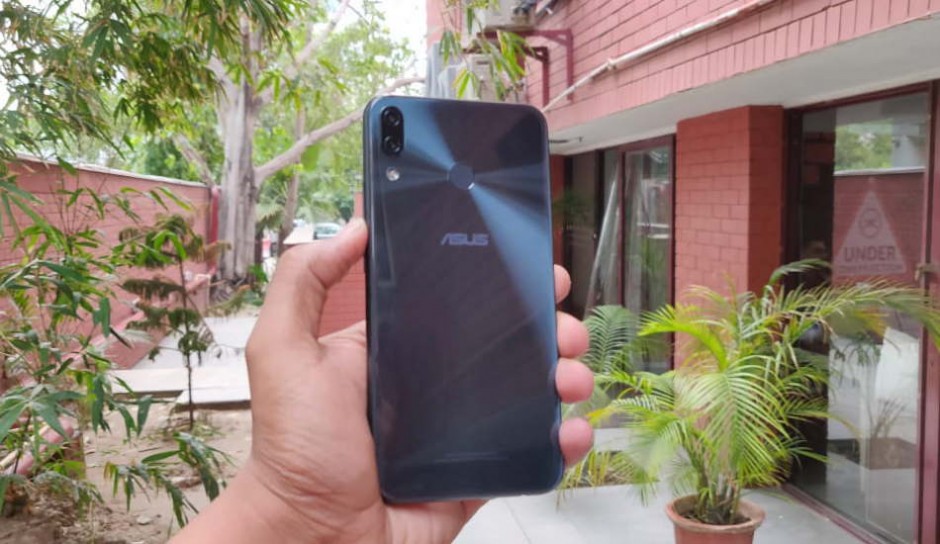
Zenfone 5z charms with its polished mirror-like glass that’s quite reflective and a little too partial to smudges and fingerprint with regular use. The curved glass panels on the front and rear are fixed onto an aluminium frame to make the device sturdy and comfortable to hold. The glass back with its vertical alignment of the cameras does remind you of Apple’s flagship smartphone through the design does earn Asus more points than its budget-centric Zenfone Max Pro M1. There’s a fingerprint scanner on the rear panel which plays as the focal point for X-like mirror reflection at the back of both the Meteor Silver and Midnight Blue variants of the Zenfone 5z.
Winner: LG G7+ ThinQ
Display:
The OnePlus 6 sports a 6.28-inch Optic AMOLED FHD+ screen with a Resolution of 1080 x 2280 pixels on the front of the OnePlus 6. The device comes with rounded corners, minimum bezels and a notch at the top which extend the screen-to-body ratio to a significant 83.8 percent. The notch on the front employs an earpiece, camera, ambient light and proximity sensors, as well as a notification LED which is quite impressive considering the size of the small cutout.
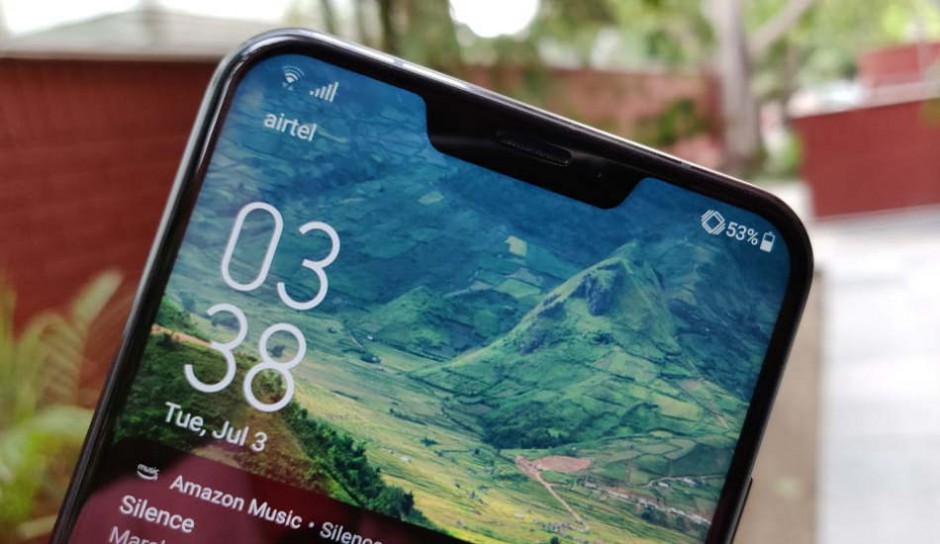
The Zenfone 5z features a slightly smaller 6.2-inch full-HD+ LCD screen with an iPhone X-like notch and a resolution of 1080×2246 pixels. The screen covers 95% of DCI-P3 colour gamut with 83.6 percent screen-to-body ratio that spans on an elongated 18.7:9 aspect ratio on the front. While seemingly reducing the presence of bezels on the edges and at the top, the 5z even has a smaller notch than the iPhone X and thus ticks all the boxes for a high-end smartphone of 2018.
The G7+ ThinQ comes with a similarly sized 6.1-inch IPS LCD QHD+ Super Bright FullVision Display with a high brightness quotient of 1000 nits and 19.5:9 aspect ratio. The resolution of the screen is 3120 x 1440 pixels which outputs at 564 ppi Pixel density, the most in any flagship smartphone of 2018 and definitely the densest of the three. The powerful bright screen can also tone down to a minimum brightness of 3.3nits, making it easier for the eyes in dark environments.
Winner: LG G7+ ThinQ
Hardware:
All three devices in the list are powered by the same Qualcomm octa-core Snapdragon 845 Chipset clocked at 2.8GHz with Adreno 630 graphics. The only downside to getting home a G7+ is the limited 6GB RAM while the OnePlus 6 and Zenfone 5Z offer up to 8GB memory in their highest configurations. While Internal Memory isn’t that big of a deal at an age where every media is streamed online, it’s always a plus point having a ton of extra space on a smartphone, which is why the 256GB storage variant in the much cheaper Zenfone 5Z might turn out to be a blessing.
For everything else, the mid-range flagships balance sheets with similar hardware features like WiFi, Bluetooth 5.0 LE, GPS, GLONASS, NFC and USB Type-C for charging. All three phones also equip a fingerprint sensor at the rear end, so none of them are missing out on any biometric features.
Winner: Asus Zenfone 5Z, for being cheaper and offering more than the other two.
Software:
The LG G7+ ThinQ runs on Android 8.0 Oreo which is relatively older at the moment since most older devices have already been seeded an update to Android 8.1. The interface isn’t as customised as the ones by Xiaomi but yes, LG has indeed put a few of its own UX elements inside the skin, settings, and default apps on the G7+. The display has a notch on top which LG funnily calls a ‘second screen’ and can be customisable to a user’s liking or be completely hidden if you choose to.

The OnePlus 6 offers a near-to-stock Android Oreo experience with regular updates as well as a clutter-free home screen.Users can replace the stock on-screen buttons for gesture navigation that works a lot like the one on the iPhone X. Although not as stable and smooth like on the Apple device, the gestures on the OP6 are decent.
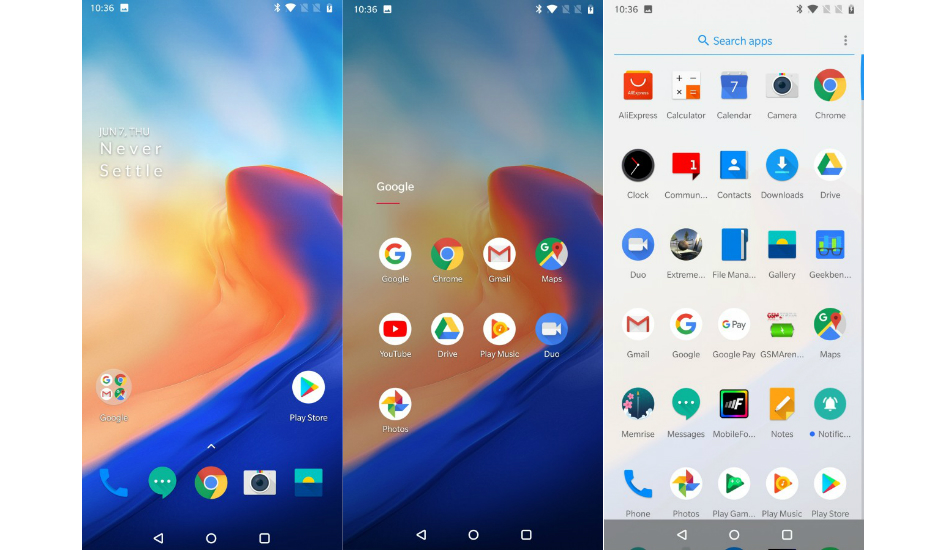
With ZenUI 5.0, the Zenfone 5Z ‘almost’ offers a stock version of Android which is based on Android 8.1 Oreo and has minimum bloatware. There are gestures for navigation and AI features like AI Boost for reassuring more power when using the smartphone for extreme gaming scenarios, AI Photography, AI Display and AI Ringtone with ZeniMoji which is Asus’ version of Apple Animoji. Also, Asus has an excellent track record of releasing updates at a regular interval.
Winner: Asus Zenfone 5Z, for timely updates
Camera:
OnePlus 6
The OnePlus 6 equips a dual camera setup with a 16MP lens that features optical image stabilization and f/1.7 Aperture alongside a secondary 20MP sensor with the same fixed aperture. Both sensors are placed vertically adjacent to each other with a dual-LED flash below the camera module.
The Portrait mode offers a ton of detail and a smoother transition from subject to the background, which is blurred with a satisfactorily good amount of depth of field. The camera being the best of all OnePlus phones is a solid performer in producing the right colour saturation, balance, sharpness and dynamic range. In terms of videography, the device will be able to record 4K videos at 60 fps, 1080p videos at 240 FPS and slow-motion videos of 720p resolution at 480 fps.
Zenfone 5Z
The main highlight for photography on the Zenfone 5z comes in the form of the 1.4-micron pixel sized primary 12-megapixel (f/1.8, 24mm, 1/2.55″) sensor with phase detection Autofocus and electronic image stabilisation. The secondary sensor that it’s coupled with is an 8MP Wide-Angle (f/2.0, 12mm, 1/4″, 1.12µm) lens which will enable depth detection when clicking photos under portrait mode.
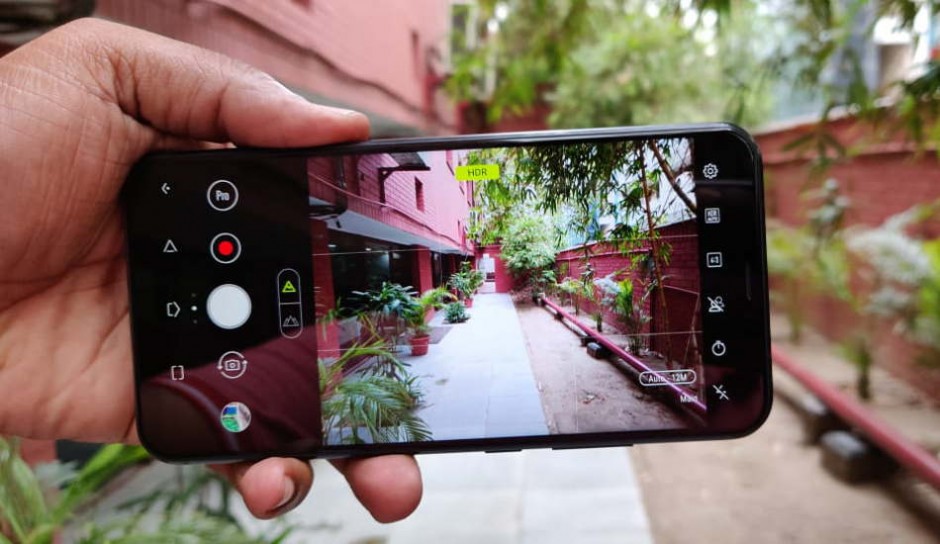
With a strong chipset, the 5z possesses the ability to shoot 4K videos at 30fps while recording 1080p videos at 60/120 fps and slow-motion footage at 240fps. The setup looks promising and surely gains points for AI Photography which allows photo learning, scene detection, portrait mode and beautification.
LG G7+ ThinQ
There’s a Dual 16MP (30mm, 1/3.1″, 1.0µm) + 16MP (16mm, 1/3.1″) lens setup at the back of the G7+, one of which is a wide angle lens with an aperture of f/1.9 and field of view that spans 107 degrees while the other makes use of a f/1.6 aperture and 71 degrees field of view. There’s an 8MP (f/1.9, 26mm) on the front which is also a wide-angle sensor.
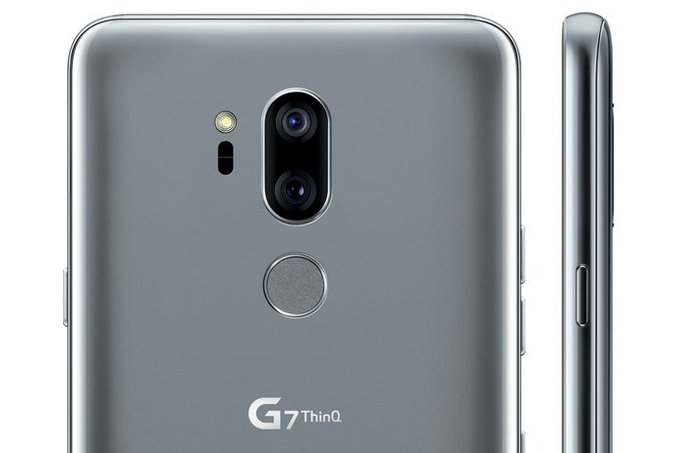
The camera is enabled with AI features that offer 19 shooting modes, for enhanced intelligence-optimised shots and up to four times brighter shots when capturing low light subjects. LG uses pixel binning and software processing to adjusts the camera settings automatically when shooting in low light. Additional camera features include a Live Photo mode that records one second before and after the shutter is pressed for snippets of unexpected moments or expressions that would normally be missed and Face Recognition stickers that generate fun 2D and 3D overlays.
Winner: G7+ ThinQ for photos, OnePlus 6 for slow-mo videos.
Battery:
OnePlus 6 comes with a large 3,300mAh battery with its traditional Dash Charge technology which juices up the phone through a 5V 4A 20W charger, the largest output among the three and thus the fastest.
The Zenfone 5z is fuelled by a 3,300mAh battery which in combination with the SND 845 chipset will last you for a day of moderate usage. The phone supports Fast charging through its 9V/2A 18W which is quick.
The 3,000mAh battery on the LG G7+ is not only smaller than the other two but also smaller in contrast to last year’s LG G6. But with an improved chipset, the G7+ could easily fare as good as the OnePlus and Asus devices if its Always-On display is turned off. LG says that the G7+ is Qualcomm QuickCharge 3.0 compatible and bundles a 9V/1.8A adapter which can charge the device from 0-40 percent in 30 minutes. It’ll be interesting to see how LG’s approach to increasing the longevity of the battery by fine-tuning the charging mechanism works for them. The G7+ is also the only device with wireless charging support built-in.
Tie: OnePlus 6 and AsusZenfone 5Z
Verdict:
Before AI became an integral part of smartphones, it was LG which developed its artificial intelligence division ThinQ and brought it to its flagship phones. The G7+ ThinQ might be a little late to join the party but it has managed to tick all the right places where its competitors might have gone wrong. The G7+ ThinQ comes with the right set of cameras, proper design elements with style and durability in mind, the best display out there on a smartphone and if that doesn’t please you, an industry standard flagship chip on the inside.
OnePlus 6 is a reliable alternative since you aren’t losing out on the goodies of the LG device. It has a faster charging mechanism and a good pair of cameras to get you through the day and comes in at Rs 39,999 for the 128GB version.
For those who aren’t willing to spend much on a smartphone but still want all the features that would come in a flagship device can buy the Asus Zenfone 5z which starts at Rs 29,999 for the base variant and goes up to Rs 36,999 for the fully specced 256GB version. A decent option if all you value in your phone is its performance and not its camera, design or the battery.
One should also not forget that LG as a company doesn’t install faith in the minds of mobile consumers because they have not been serious about their smartphone for quite some time in India.


